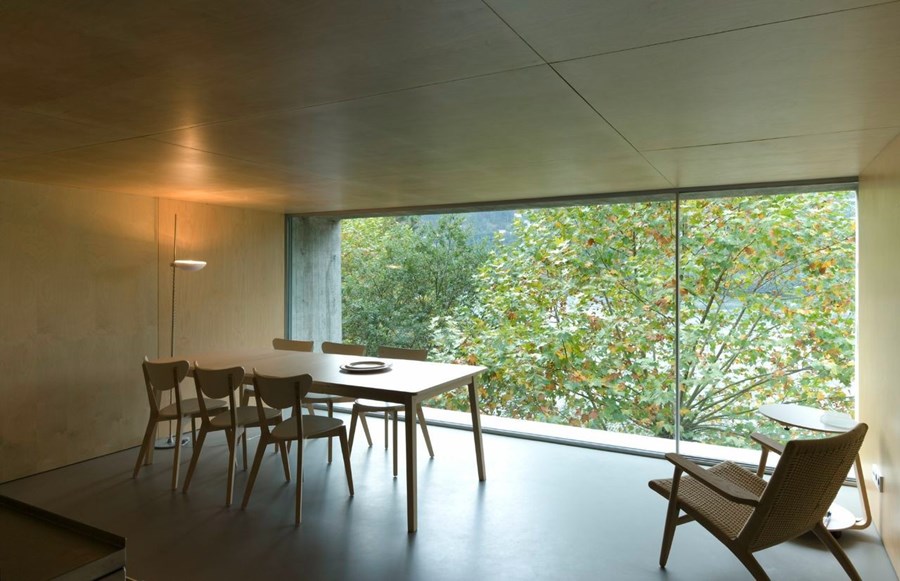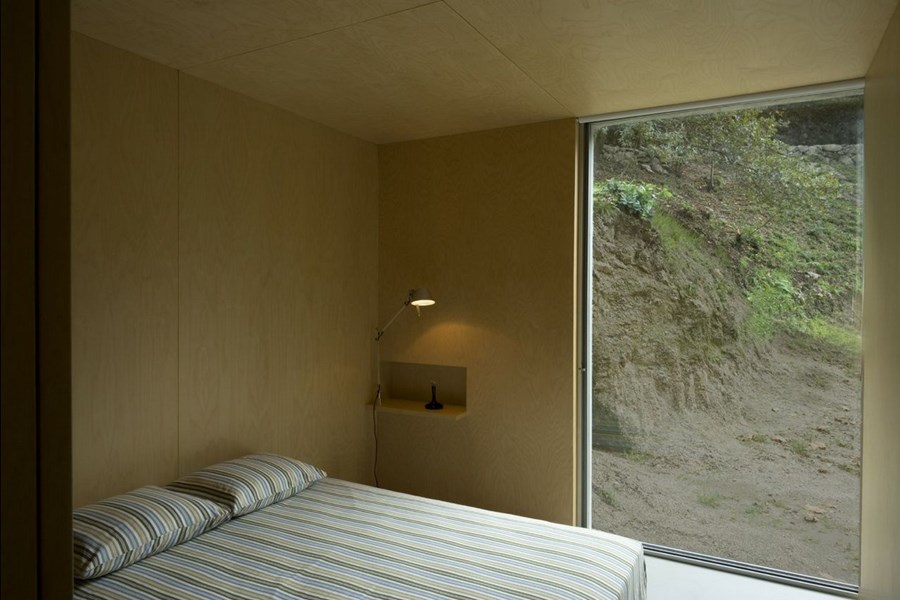Casa no Gerês is a contemporary house designed by Correia/Ragazzi Arquitectos and is located in Caniçada, Vieira do Minho. It was completed in 2006 and covers an area of 150 m2.











“The project of this house foresees both to reconstruct and augment a ruin into a weekend retreat at a plot with extraordinary morphological characteristics, within Cavado River and its tributary. The plot, of 4.060m2, is located in a protected natural area and has for conditions a concrete construction and the preservation of all trees. The constructive capacity was given by the existing ruin.
Since the first visit of the site it was clear we were dealing with a delicate project. The project placement on the plot was essential given that the surroundings were the main reference for the construction.
Having practiced water-ski for 20 years, the river grounds the weekend house for the clients. For them, the exceptional outlook one enjoys should be an element of the house; for us, architects, should be an evident inside space value, but also, the opposite concern was relevant – the house could only act as a significant element on the landscape.
Having identified the site, a pragmatic analyse of the circumstances was in order: the demands of the program were a house for a couple and child, a visitor’s suit preferably dislocated from the house as also should be the storehouse for the water-ski activities holding a shower, bathroom and storage area.
The area of the house, inevitably small, was specified by the reduced dimension of the pre-existent ruin. Thus, the first sketches of the solution appear in its dependence… Meanwhile, the fundamental decision revealed itself through the house orientation. Its final location on site, at right angles to the slop, seeks for a better relation with the plot and the platform where it “lays”, avoiding all trees and damage to the outside area. The weightless intervention enhanced by the overhanging part that shoots off the riverbank cliff maximizes the transparent appearance from the river reducing land occupancy.
The house makes a dialectic reference to Malaparte House by AdalbertoLibera and the remarkable table Less by Jean Nouvel, suggesting the constructive solution for the top of the hanging part.
As a half-buried house in its relation to the main access it appears diminished; on the other hand, from the river it appears as a glass frame dissimulated on the vegetation. The relation established by the house and ruin defines both the access and the scale of the intervention, transforming the ruin into a constant presence from the inside of the house such as any other landscape element.
The concrete plasticity in relation with the luxuriant flora was determinant, therefore the careful concrete cast drawing. This concrete volume with accessible roof was entirely covered with birch on the inside and has grey self-levelled pavement.”
Photos by Luis Ferreira Alves.



